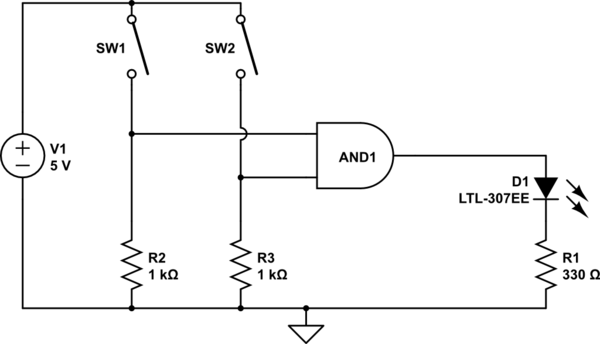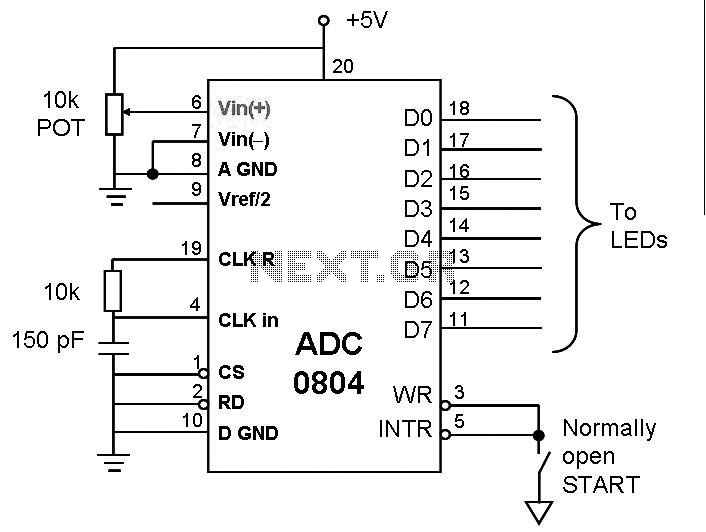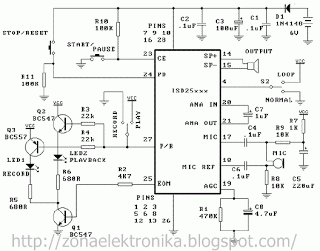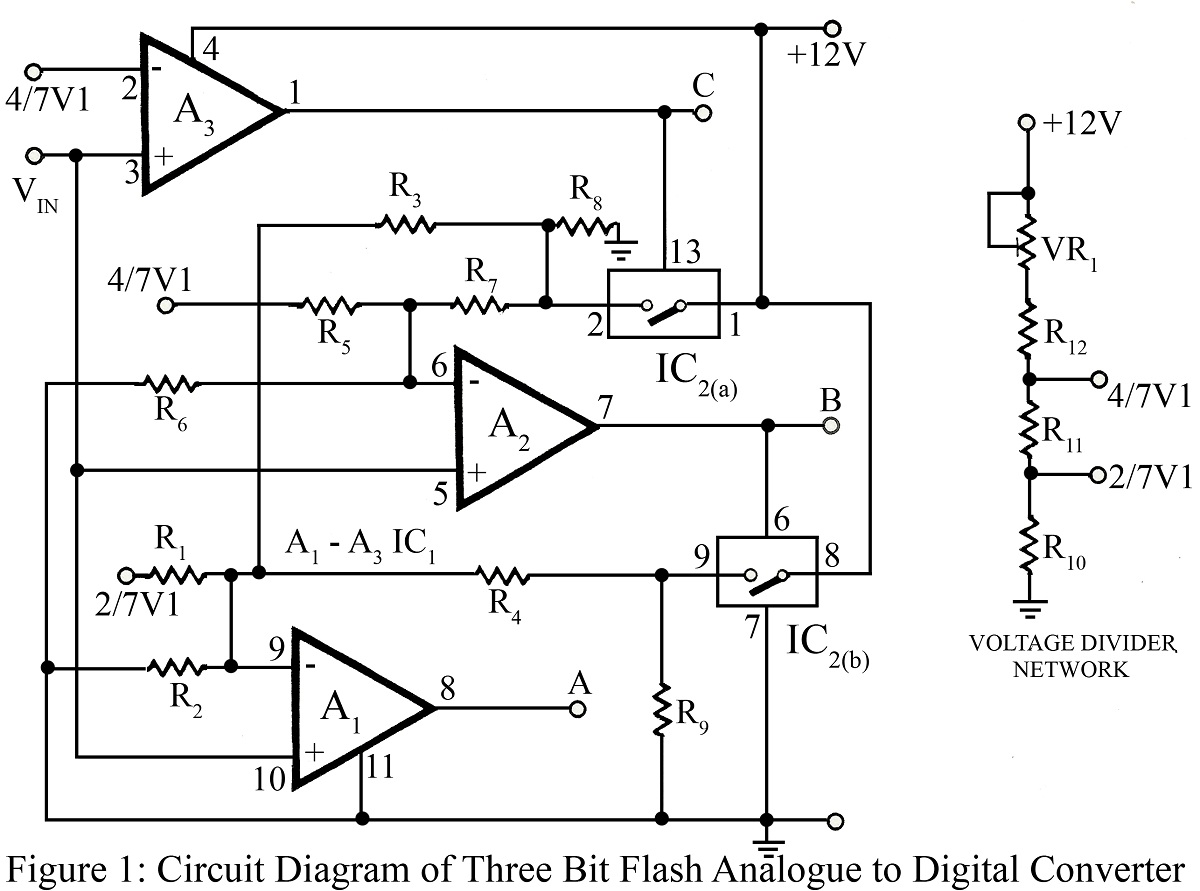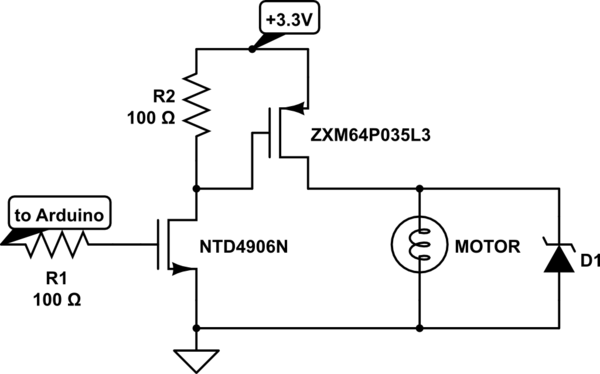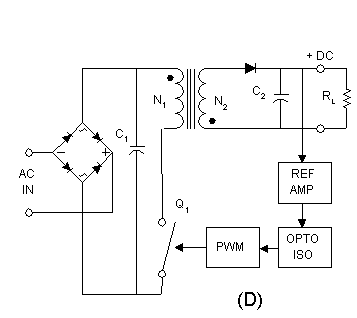
Homemade Digital CALL-ID English Version
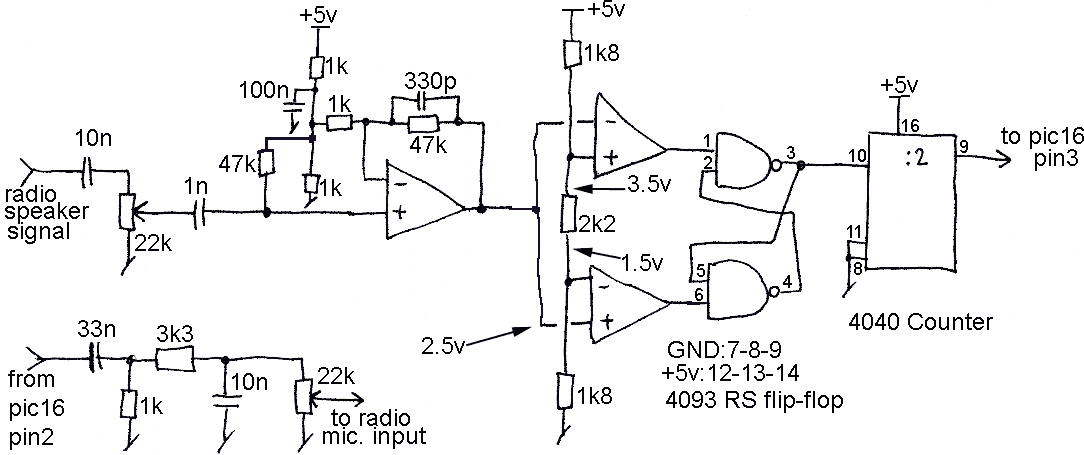
The reason for this project was to facilitate a quick installation for a local friend 10 km away, enabling the start of real-life testing to identify and resolve bugs and problems before releasing it to other users. The software is not yet complete, and everything is programmed in ANSI C. The menu and display system is directly adapted from a wattmeter project created last year. To access the menu screens, press MENU, use the DIAL to scroll through them, and press SELECT to activate the chosen menu item. The data transmission speeds are as follows: 0 = 2500 bits/sec = 416 characters/sec, and 1 = 1666 bits/sec = 277 characters/sec. Each character is represented using only 6 bits, allowing for a total of 64 different letters and numbers, which contributes to the high data transmission speed. The character set follows the ASCII standard. The hexadecimal and binary values for each character are provided, demonstrating that adding 30 in hexadecimal to the received byte yields the corresponding ASCII character. Reserved bytes may be utilized in the future for selective calls or SMS messages, but the current software version ignores these reserved bytes. The first CALL-ID unit has been installed for initial amateur testing, with the longest distance callsign transferred so far being from OZ3KLA to OZ2CPU at VHF over a distance of 13 km.
The project involves a microcontroller-based system designed for efficient data transmission and reception of callsigns. The system operates using a menu-driven interface that simplifies user interaction. The microcontroller is programmed in ANSI C, ensuring compatibility with standard C compilers and enabling straightforward debugging and maintenance. The menu system allows users to navigate through various options, with the DIAL serving as a scroll mechanism and the SELECT button confirming choices.
The data transmission is optimized for speed, with two primary baud rates configured for different operational scenarios. The choice of 6-bit encoding allows for a compact representation of characters, significantly enhancing the throughput. The ASCII character set is utilized, with hexadecimal and binary representations provided for clarity. This encoding scheme permits efficient data handling and supports the potential for future enhancements, including the implementation of reserved bytes for additional functionalities.
The hardware setup likely includes a RF module capable of UHF and VHF transmissions, enabling communication over various distances. The testing phase is crucial for validating the performance of the system under real-world conditions, with initial results indicating successful callsign transfers. The project aims to refine the software and hardware components before broader deployment, ensuring reliability and user satisfaction. Further updates and enhancements are anticipated as testing progresses and feedback is gathered from initial users.The reson this was made this was, was to make first installation fast an a local freiend 10km away, so i cuold start real life testing, so bugs and problems can be solved before this is gived free to all other users. Software is not complete yet, all is programmed in anci C The menu and display system is stollen directly from the wattmeter project
i made last year. Press MENU to see menu screens, turn the DIAL to scroll through the menu screens, press SELECT TO ACTIVATE shown menu item. 0 = 2500 bits/sec = 416 Chr/sec. 1 = 1666 bits/sec = 277 Chr/sec. Each charracter is made using only 6 bits, so a total of 64 different letters and numbers are possible, that is also why this fast speed is possible.
Character set ASCII NEW NEW Character Hex Hex Binary Value - - - - 30 00 000000 0 31 01 000001 1 32 02 000010 2 33 03 000011 3 34 04 000100 4 35 05 000101 5 36 06 000110 6 37 07 000111 7 30 08 001000 8 39 09 001001 9 3A 0A 001010 : (colon) 3B 0B 001011 ; (semi-colon) 3C 0C 001100 < (less than) 3D 0D 001101 = (equal sign) 3E 0E 001110 > (greater than) 3F 0F 001111 (question mark) 40 10 010000 @ (AT symbol) 41 11 010001 A 42 12 010010 B 43 13 010011 C 44 14 010100 D 45 15 010101 E 46 16 010110 F 47 17 010111 G 48 18 011000 H 49 19 011001 I 4A 1A 011010 J 4B 1B 011011 K 4C 1C 011100 L 4D 1D 011101 M 4E 1E 011110 N 4F 1F 011111 O 50 20 100000 P 51 21 100001 Q 52 22 100010 R 53 23 100011 S 54 24 100100 T 55 25 100101 U 56 26 100110 V 57 27 100111 W 58 28 101000 X 59 29 101001 Y 5A 2A 101010 Z 5B 2B 101011 G† 5C 2C 101100 G… 5D 2D 101101 (reserved) 5E 2E 101110 (reserved) 5F 2F 101111 (reserved) 60 30 110000 (space) 61 31 110001 (reserved) 62 32 110010 (reserved) 63 33 110011 (reserved) 64 34 110100 (reserved) 65 35 110101 (reserved) 66 36 110110 (reserved) 67 37 110111 (reserved) 68 38 111000 (reserved) 69 39 111001 (reserved) 6A 3A 111010 (reserved) 6B 3B 111011 (reserved) 6C 3C 111100 (reserved) 6D 3D 111101 (reserved) 6E 3E 111110 (reserved) 6F 3F 111111 (reserved) You simply add 30 hex to the recieved byte then you get the normal ASCII character, The reserved bytes wil maybe be used in the future for selective call or SMS messages, the present software version ignore those reserved bytes. First CALL-ID unit installed at first amateur, testing is in progress. Longest distance callsign transfered so far, at UHF: not tryed, (0 km) Longest distance callsign transfered so far, at VHF: from OZ3KLA to OZ2CPU (13 km) Longest distance callsign transfered so far, at HF: not tryed, (0 km) More info will come soon.
26. Marts. 2003. OZ2CPU. 🔗 External reference
The project involves a microcontroller-based system designed for efficient data transmission and reception of callsigns. The system operates using a menu-driven interface that simplifies user interaction. The microcontroller is programmed in ANSI C, ensuring compatibility with standard C compilers and enabling straightforward debugging and maintenance. The menu system allows users to navigate through various options, with the DIAL serving as a scroll mechanism and the SELECT button confirming choices.
The data transmission is optimized for speed, with two primary baud rates configured for different operational scenarios. The choice of 6-bit encoding allows for a compact representation of characters, significantly enhancing the throughput. The ASCII character set is utilized, with hexadecimal and binary representations provided for clarity. This encoding scheme permits efficient data handling and supports the potential for future enhancements, including the implementation of reserved bytes for additional functionalities.
The hardware setup likely includes a RF module capable of UHF and VHF transmissions, enabling communication over various distances. The testing phase is crucial for validating the performance of the system under real-world conditions, with initial results indicating successful callsign transfers. The project aims to refine the software and hardware components before broader deployment, ensuring reliability and user satisfaction. Further updates and enhancements are anticipated as testing progresses and feedback is gathered from initial users.The reson this was made this was, was to make first installation fast an a local freiend 10km away, so i cuold start real life testing, so bugs and problems can be solved before this is gived free to all other users. Software is not complete yet, all is programmed in anci C The menu and display system is stollen directly from the wattmeter project
i made last year. Press MENU to see menu screens, turn the DIAL to scroll through the menu screens, press SELECT TO ACTIVATE shown menu item. 0 = 2500 bits/sec = 416 Chr/sec. 1 = 1666 bits/sec = 277 Chr/sec. Each charracter is made using only 6 bits, so a total of 64 different letters and numbers are possible, that is also why this fast speed is possible.
Character set ASCII NEW NEW Character Hex Hex Binary Value - - - - 30 00 000000 0 31 01 000001 1 32 02 000010 2 33 03 000011 3 34 04 000100 4 35 05 000101 5 36 06 000110 6 37 07 000111 7 30 08 001000 8 39 09 001001 9 3A 0A 001010 : (colon) 3B 0B 001011 ; (semi-colon) 3C 0C 001100 < (less than) 3D 0D 001101 = (equal sign) 3E 0E 001110 > (greater than) 3F 0F 001111 (question mark) 40 10 010000 @ (AT symbol) 41 11 010001 A 42 12 010010 B 43 13 010011 C 44 14 010100 D 45 15 010101 E 46 16 010110 F 47 17 010111 G 48 18 011000 H 49 19 011001 I 4A 1A 011010 J 4B 1B 011011 K 4C 1C 011100 L 4D 1D 011101 M 4E 1E 011110 N 4F 1F 011111 O 50 20 100000 P 51 21 100001 Q 52 22 100010 R 53 23 100011 S 54 24 100100 T 55 25 100101 U 56 26 100110 V 57 27 100111 W 58 28 101000 X 59 29 101001 Y 5A 2A 101010 Z 5B 2B 101011 G† 5C 2C 101100 G… 5D 2D 101101 (reserved) 5E 2E 101110 (reserved) 5F 2F 101111 (reserved) 60 30 110000 (space) 61 31 110001 (reserved) 62 32 110010 (reserved) 63 33 110011 (reserved) 64 34 110100 (reserved) 65 35 110101 (reserved) 66 36 110110 (reserved) 67 37 110111 (reserved) 68 38 111000 (reserved) 69 39 111001 (reserved) 6A 3A 111010 (reserved) 6B 3B 111011 (reserved) 6C 3C 111100 (reserved) 6D 3D 111101 (reserved) 6E 3E 111110 (reserved) 6F 3F 111111 (reserved) You simply add 30 hex to the recieved byte then you get the normal ASCII character, The reserved bytes wil maybe be used in the future for selective call or SMS messages, the present software version ignore those reserved bytes. First CALL-ID unit installed at first amateur, testing is in progress. Longest distance callsign transfered so far, at UHF: not tryed, (0 km) Longest distance callsign transfered so far, at VHF: from OZ3KLA to OZ2CPU (13 km) Longest distance callsign transfered so far, at HF: not tryed, (0 km) More info will come soon.
26. Marts. 2003. OZ2CPU. 🔗 External reference
